Like the radio, digital cameras, the internet and even duct tape, drones are an example of revolutionary technology originally developed for military use and later adapted for everyday life.
Also known as unmanned aerial vehicles (UAVs), drones are now enjoyed by hobbyists, photographers and curious looky-loos alike. They’re used to rescue avalanche victims, detect landmines and back reforestation efforts. And eventually, they will be autonomously delivering pizzas and packages to our doors.
Types of Drones
- Multi-rotor drones
- Single-rotor drones
- Fixed-wing drones
- Fixed-wing hybrid vertical takeoff and landing (VTOL) drones
When it comes to differentiating one drone from the next, it’s much more than bold color finishes and price ranges. In fact, specific features — such as design, size, power source or use case — classify drones into specific types. Here are some of those categories.
Main Types of Drones
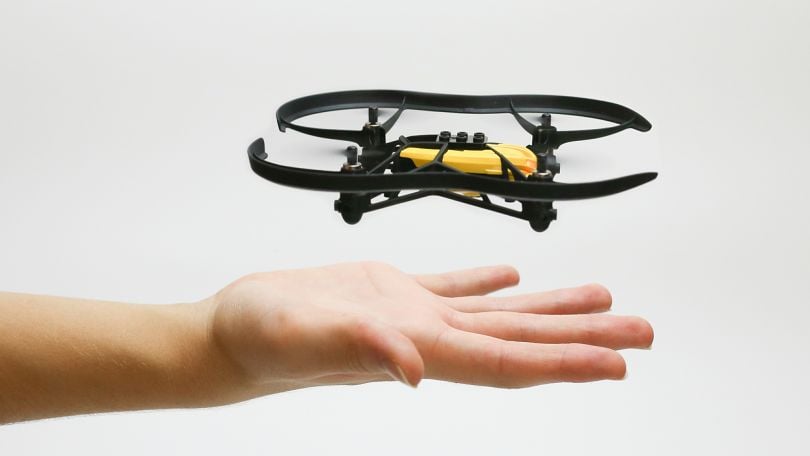
Multi-Rotor Drones
Multi-rotor drones have a frame that branches out to incorporate multiple propellers. Their designs can include several model types that range from tricopters (drones with three propellers) to octocopters (drones with eight propellers). Multi-rotor drones are a type of rotary-wing drone, which are drones that become airborne by using circulating blades to push wind downward and vertically lift themselves from the ground.
Use cases: Aerial photography and videography, aerial mapping and surveying, asset inspection, crop monitoring, short-range product delivery
Single-Rotor Drones
Single-rotor drones resemble miniature helicopters, with one central propeller supporting the body. They are also a type of rotary-wing drone.
Use cases: Aerial mapping and surveying, aerial surveillance and patrol, heavy payload delivery, search and rescue operations
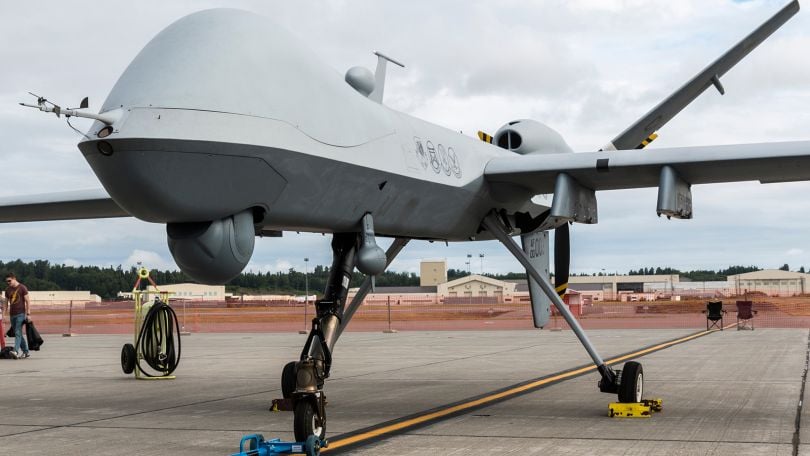
Fixed-Wing Drones
Similar to an airplane, the body of a fixed-wing drone relies on wings to lift into the air rather than rotors. These drones are typically large, fuel-powered models used by the military and require a runway to operate.
Use cases: Aerial mapping and surveying, asset inspection, long-range payload delivery, unmanned aerial refueling
Fixed-Wing Hybrid Vertical Takeoff and Landing (VTOL) Drones
Combining the best of both rotary models and fixed-wing models, these hybrids can take flight by lifting off in a vertical motion — indicated as VTOL, or vertical takeoff and landing — then adjust to a horizontal flight mode by tilting the wing-attached rotors toward the nose of the drone.
Use cases: Aerial photography and videography, aerial mapping and surveying, large-area inspection and surveillance, long-range product delivery
Types of Drones According to Size

Very Small Drones
These drones, also known as nano drones, can measure under 50 centimeters in length and can weigh as little as 11 grams. They excel at reaching confined spaces, and can be used for search and rescue or intelligence gathering. One of the smallest drones available to the commercial market is the Hubsan H111 NANO Q4, which is 1.8 inches by 1.8 inches and weighs 11.5 grams.
Small Drones
Small drones, also known as micro drones or mini drones, span between 50 centimeters and two meters long, and land somewhere between 200 to 1,000 grams in weight. They are often used outdoors for recreation and photography, or indoors for equipment inspection. The RQ-11 Raven UAV used in global military operations is one example of a small drone, as it is one meter long with a wingspan of about 1.4 meters.
Medium Drones
Medium drones tend to have a wingspan between five and 10 meters in length, and can carry payloads up to 200 kilograms. While smaller than a light aircraft, its size still requires at least two people to lift them. These drones are often used for professional or military purposes, including surveillance or photography. The Hunter RQ-5A or MQ-5B UAV was a seven-meter-long medium drone used by the U.S. military until 2015, though advanced versions of the platform remain in use today.
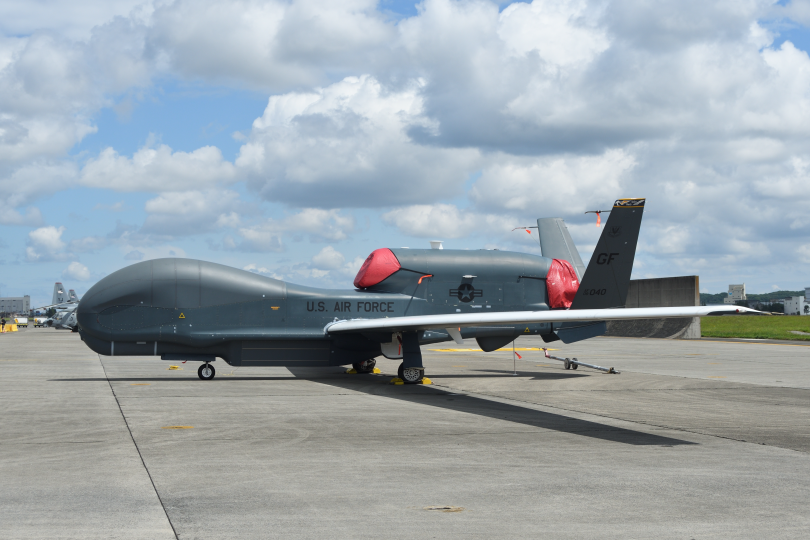
Large Drones
Large drones have a length greater than 10 meters, can carry payloads over 200 kilograms and can operate at an altitude of up to 18,000 feet mean sea level. These drones are mainly reserved for military and combat purposes, and are sometimes used alongside manned aircraft in military operations. The Global Hawk unmanned aircraft system (UAS) includes a UAV that is 14.5 meters in length, and is used by the U.S. military for surveillance and reconnaissance.
Types of Drones According to Abilities
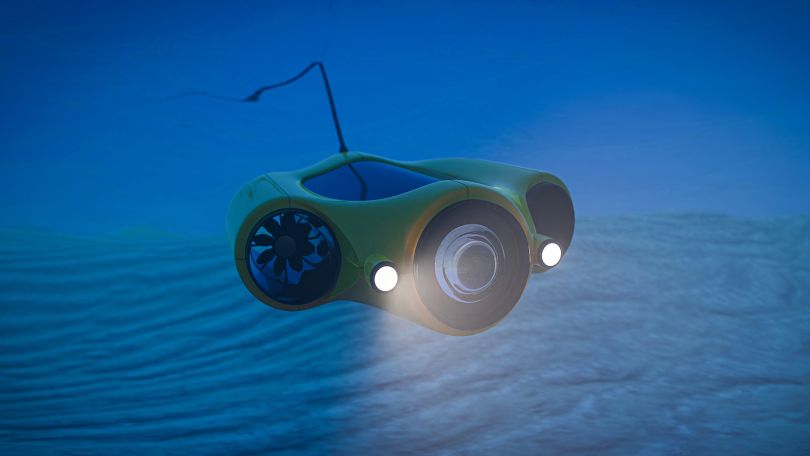
Underwater Remotely Operated Vehicles
Submarine drones, known as underwater remotely operated vehicles (ROVs), can explore the ocean and come in two different varieties: tethered and untethered. While limited by a cable, underwater drones relay real-time data, such as video, to the source at the other end of the cable without losing connection. Untethered underwater ROVs share similar capabilities but cannot travel as far below without losing signal.
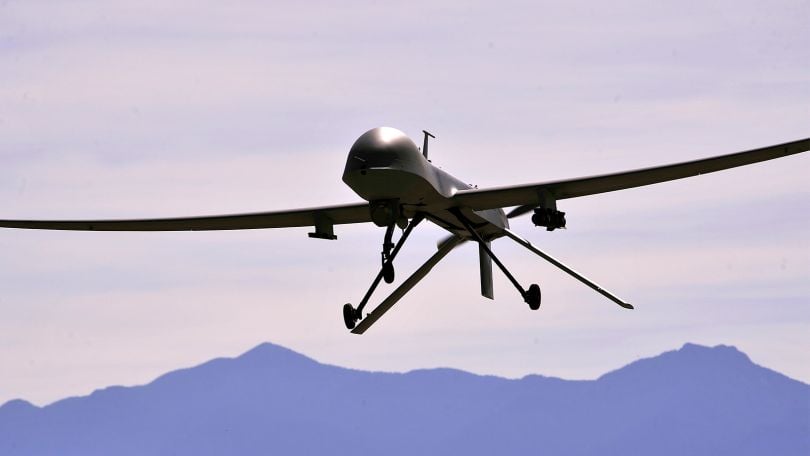
Combat Drones
Combat drones allow military forces to conduct aerial warfare without risking the life of a human pilot. These weaponized aircrafts are equipped with bombs or missiles. While the use of armed drones has increased for U.S. operations since the 9/11 terrorist attacks, their origins date back to 1849 when Austria launched 200 unmanned balloons filled with explosives during an attack on Venice. In addition to the Predator and Reaper models mentioned above, the MQ-9B SkyGuardian is a combat drone used by the Royal Air Force.
Delivery Drones
Delivery drones are an autonomous solution for distributing packages to consumers. Over the past decade, household names like Walmart, UPS and Domino’s have been dabbling in developing delivery drone prototypes and conducting trial runs. And while there are several claims to being the “world’s first” drone delivery service — like this one that rolled out in Iceland in 2017 — widespread use is still few and far between. Amazon, which launched its drone-delivery service Prime Air in January in two towns, is one contender that’s showing the promise of delivery drones. The company used MK27-2 hexacopters to deliver packages that weighed less than five pounds to residents in College Station, Texas, and Lockeford, California.
GPS Drones
Like a smartphone, these drones are equipped with a global positioning system. In sync with a network of orbiting satellites, these models transmit signals in order to make their location readily traceable, which comes in handy for features that allow autopilot, return-to-home functionality and waypoint navigation. GPS drones, like Yuneec’s Mantis Q, will return on command, using built-in navigation to respond to voice control commands such as “come back.”
Endurance Drones
Endurance drones are optimized for flight time, that is, to stay in the air for as long as possible. This is mostly determined by the aircraft’s size, weight and accompanying payload weight. Spending hours or — in the context of military aircrafts — even days, these models may scrimp on or completely forgo bonus features like cameras, stabilizers and GPS in order to maximize in-flight capacity. The average flight time for mid-market drones is 22 minutes, while high-end drones may last 28 minutes, according to research conducted by drone manufacturer JOUAV. One example of an endurance drone is the gasoline-powered Foxtech Eagle-360 Hybrid VTOL, which can carry a 10-pound payload while still maintaining a five-hour flight time.
Photography Drones
Nearly every drone model is equipped with a camera, making nearly every example on this list a photography drone. Some drones, however, are designed with the sole intent to shoot still imagery and high-resolution video. Take a professional-grade, digital camera and attach it to rotors, or any choice of high-flying mechanism, and you have a photography drone. Director Sam Mendes shot the 2012 Bond film Skyfall using Flying-Cam 3.0 SARAH, ultimately winning an Oscar for Best Cinematography.
Racing Drones
Racing drones prioritize speed, maneuverability and aerodynamics over all other features. During a race, operators race each other on a set track wearing goggle-like, head-mounted displays that livestream from their drone’s camera for a first-person view. Both the Walkera F210 3D and the EMAX Tinyhawk Freestyle BNF quadcopter are racing vehicles.
Reconnaissance Drones
Slightly larger in size, reconnaissance drones are used as both non-combat and combat drones. They can identify targets for precision-guided munitions launched from external, manned systems or directly fire the munitions themselves, depending on the model. Of all drone types, these aerial vehicles are the ones most commonly employed by militaries, according to online aviation database Aerocorner. The IAI Heron and the LUNA are both classified as reconnaissance drones.
Target and Decoy Drones
The military’s primary use of target and decoy drones is to divert threats. These deceptive, “dummy” drones mimic manned aircraft in order to mislead enemy forces and draw them out from their covert locations. They’re typically low cost and, in the case of target drones, are often used as bullseyes in training. One example of a target and decoy drone includes the Miniature Air-Launched Decoy, or MALD.
Tactical Drones
Tactical drones are non-combat drones that are primarily used in the military for surveillance. Equipped with GPS and infrared cameras, their purpose is to gather useful intel from an aerial perspective in challenging environments. Tactical drones are typically lightweight and sized for SUV transportation while being easy to maneuver, requiring no special training. Examples include the RQ-11B Raven and the Lemur 2.
Stunt Drones
Stunt drones are small, maneuverable models built with tech to perform flips, rolls, barrel rolls, spins, dives and upside-down flight. They share a likeness to racing drones but are best thought of as toy models enhanced with special tech for aerial acrobatics. Many stunt drones are easily programmed to encode personal tricks. One example is the Ryze Tech Tello.
Toy Drones
As the name implies, certain drones are made for play. Designed with beginners and kids in mind, toy models are often colorful, inexpensive, easy to operate and can be flown indoors. Examples include Potensic A20 and the Holy Stone HS210 Mini Drone.
Frequently Asked Questions
What is a drone?
A drone is an unmanned aircraft or aerial vehicle that can be piloted remotely. They are sometimes referred to as unmanned aerial vehicles (UAVs), unmanned aerial systems (UAS) or remotely piloted aircraft systems (RPAS).
What are the 4 types of drones?
The 4 main types of drones include:
- Multi-rotor drones
- Single-rotor drones
- Fixed-wing drones
- Fixed-wing hybrid vertical takeoff and landing (VTOL) drones
What is the most popular type of drone?
Multi-rotor drones are one of the most popular types of drones for recreational and professional use.
What is the difference between a drone and a UAV?
Drones and unmanned aerial vehicles (UAVs) are essentially the same thing, with the terms often being used interchangeably. Both can refer to aircrafts that are piloted remotely or autonomously, with no human operators, crew or passengers on board.




